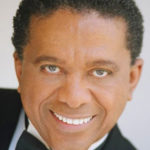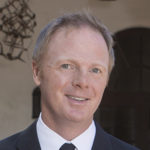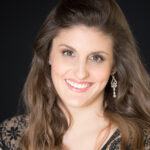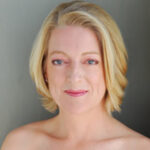
Verdi’s Greatest Hits with SB Symphony
CONCERT REVIEW: Operatic flair takes the stage : Santa Barbara Symphony, with vocal and choral help, grandly celebrates Verdi
JOSEF WOODARD, NEWS-PRESS CORRESPONDENT
February 11, 2014 7:17 AM
Master Italian opera composer Verdi’s milestone 200th birthday year ensures an even greater Verdian presence in the public eye and ear. Opera companies around the globe and around the block are keeping busier than usual with Verdi’s repertoire (locally, watch for Opera Santa Barbara’s “Falstaff” in March), as well as forums beyond the opera world, per se.
Just prior to the Santa Barbara Film Festival, the Santa Barbara Symphony threw its expanded collective hat into the Verdi-toasting ring, and quite grandly. Led by maestro Nir Kabaretti, with help from the Santa Barbara Choral Society and strong soloists – soprano Angel Blue and tenor John Pickle – the program’s inspiring Verdi oeuvre sampler plate was cheekily and accurately named “Verdi’s Greatest Hits.” Add to the musical doings the amusing insights of the symphony’s regular pre-concert lecturer Said Ramon Araiza, and the concert amounted to a jukebox jigsaw of parts conveying the larger whole of Verdi’s life and work, covering the last five decades of the 19th century and cherry-picking bits from his 25 operas.
Last weekend’s Santa Barbara Symphony program also turned its sights from legendary 19th century Italian culture to a very local concern, being the retirement of longtime violinist Gladys Secunda. The symphony’s executive director David Grossman paid onstage tribute to the violinist, who has been with the orchestra for over 50 years – and through multiple conductor eras. Her bouquet was well-earned.
All musical forces involved managed to secure moments in the spotlight, including the orchestra’s rich readings of overtures, from “I vespri,” “Nabucco” and “La forze del desino,” to the lucid choral heft on Nabucco’s “Gli arredi festivi” and “Patria oppressa” from (directed by JoAnne Wasserman). More ensemble fortitude and shimmer came through on Nabucco’s “Va, pensiero.”
Inherently, though, our senses were most closely drawn to the personalized scale and intimate emotionality of the guest vocalists, introduced on the ever-popular themes from the first great Verdi hit, “Rigoletto.” Ms. Blue, who boasts a warm, powerful and character-filled instrument, delivered “Caro nome,” while the impressively gifted Mr Pickle, with a bold but nuanced tonal palette, confidently sang the classic “La donna e mobile” (with its cavalier nature and line “woman is flighty like a feather in the wind”), naturally infectious even a century and a half after its penning.
On the duet “Gli nella note densa,” from “Otello,” the pair upped the dramatic heat – if in piecemeal form here – on the love duet between Otello and Desdemona. In the concert’s second half, Ms. Blue and Mr “Macbeth,” via the Choral Society Pickle reached a particularly passionate emotional pitch, with her read on “E strano … Sempre libera,” from “La Traviata” (presented on this stage by Opera Santa Barbara two seasons back), and his hearty rendition of “Ma se me forza perderti,” from “Un ballo in maschera.”
A breezy encore of the festive “Drinking Song” from “La Traviata” (“let’s enjoy our share of wine and mirth while we can”) seemed an apt nightcap for a roundly musical and easily-enjoyable evening.
Portending to sum up Verdi may seem a tall order for a two-hour orchestral concert, but in the end, the concert survey managed to give a tidy sweep of the musical history, legacy and stylistic syntax that is Verdi. With luck, the concert also whet the appetites of opera-phobic listeners, offering an implicit invitation to experience the unique power of opera in its full sound, sight and staging production dimensions. See you back in this room, for “Falstaff.”

 American baritone, Ralph Cato has travelled the world extensively, telling stories in song with his warm, clarion baritone voice.
American baritone, Ralph Cato has travelled the world extensively, telling stories in song with his warm, clarion baritone voice. Tenor, Benjamin Brecher has performed over fifty operatic roles with many of the world’s most prestigious opera companies, specializing in the high lying lyric tenor repertoire. He has performed 16 roles with New York City Opera alone. Career highlights include performances with Opera Orchestra of New York, L’Opera de Nice, Rossini Opera Festival in Pesaro, L’Opera de Montreal, Santa Fe Opera, Opera Theatre of St. Louis, among many others. His orchestral solo repertoire includes Mozart, Handel, Orff, Bach, Haydn, as well as many performances of Britten. In 2000 he began performing the great Irish Tenor songs in a concert produced for him entitled A Celtic Celebration, Twenty years later, the show has become a North American hit with performances with 45 Symphonies in North America. Ben continues his discography having added his twelfth recording in 2016 Forgotten Liszt, with pianist Robert Koenig, and will record a new release in 2022 entitled “Three Centuries of Thomas Moore” including the music of Britten, Berlioz, and Sarah Gibson on MSR Classics. He is a Professor of Voice at University of California Santa Barbara, where he has served as the Head of Voice.
Tenor, Benjamin Brecher has performed over fifty operatic roles with many of the world’s most prestigious opera companies, specializing in the high lying lyric tenor repertoire. He has performed 16 roles with New York City Opera alone. Career highlights include performances with Opera Orchestra of New York, L’Opera de Nice, Rossini Opera Festival in Pesaro, L’Opera de Montreal, Santa Fe Opera, Opera Theatre of St. Louis, among many others. His orchestral solo repertoire includes Mozart, Handel, Orff, Bach, Haydn, as well as many performances of Britten. In 2000 he began performing the great Irish Tenor songs in a concert produced for him entitled A Celtic Celebration, Twenty years later, the show has become a North American hit with performances with 45 Symphonies in North America. Ben continues his discography having added his twelfth recording in 2016 Forgotten Liszt, with pianist Robert Koenig, and will record a new release in 2022 entitled “Three Centuries of Thomas Moore” including the music of Britten, Berlioz, and Sarah Gibson on MSR Classics. He is a Professor of Voice at University of California Santa Barbara, where he has served as the Head of Voice. Born and raised in Southern California, April Amante is a versatile soprano with expertise and facility in repertoire spanning from early music to contemporary musical theater.
Born and raised in Southern California, April Amante is a versatile soprano with expertise and facility in repertoire spanning from early music to contemporary musical theater. Tracy Van Fleet is pleased to return to the Santa Barbara Choral Society. As a soloist, she has performed with the Los Angeles Master Chorale, Lüneburg Symphony in Germany, Orquesta Filarmónica de Boca del Río in Mexico, Pasadena Symphony, Naples Philharmonic, Los Angeles Bach Festival, San Diego Chamber Orchestra, Colorado Philharmonic, USC Symphony and Chorus, and others. She has had many appearances with the Los Angeles Opera, Los Angeles Philharmonic, Pacific Symphony, Hollywood Bowl Orchestra, Opera Pacific, San Diego Opera and Opera Colorado.
Tracy Van Fleet is pleased to return to the Santa Barbara Choral Society. As a soloist, she has performed with the Los Angeles Master Chorale, Lüneburg Symphony in Germany, Orquesta Filarmónica de Boca del Río in Mexico, Pasadena Symphony, Naples Philharmonic, Los Angeles Bach Festival, San Diego Chamber Orchestra, Colorado Philharmonic, USC Symphony and Chorus, and others. She has had many appearances with the Los Angeles Opera, Los Angeles Philharmonic, Pacific Symphony, Hollywood Bowl Orchestra, Opera Pacific, San Diego Opera and Opera Colorado.